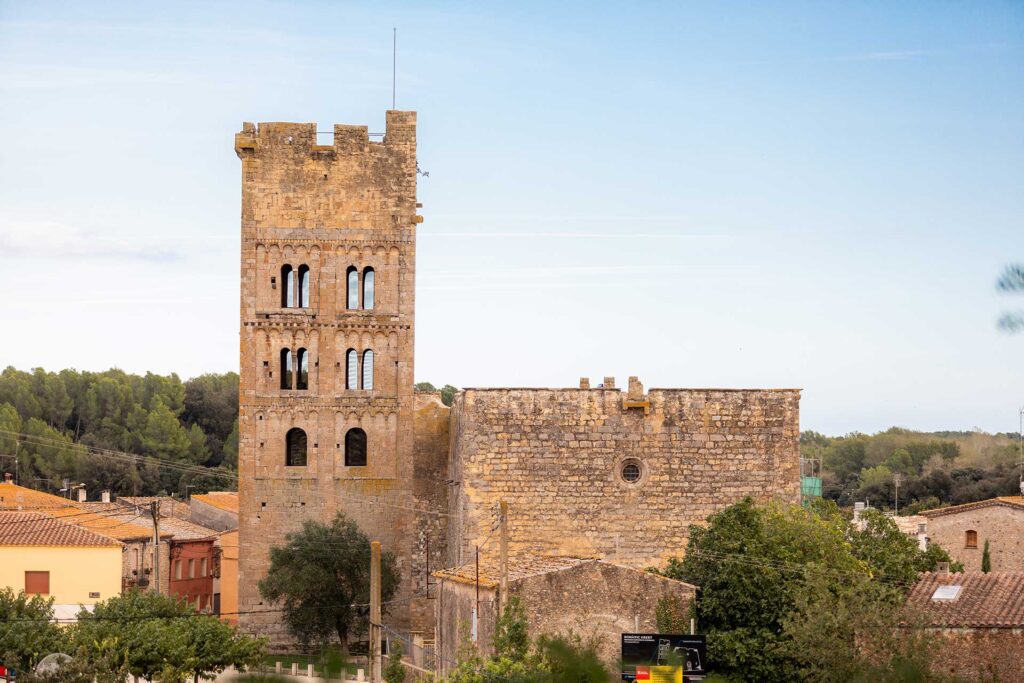
In 1066 the church was consecrated, and the bell tower was added to it at the beginning of the 12th century. It became a powerful religious community throughout the 12th century and much of the 14th century. The monastery underwent a major architectural reform in the 15th century. It was converted into a fortress and part of its structures were demolished. The bell tower was raised and the whole complex was fortified with crenels, merlons and small machicolations and a moat was dug around it. The current Gothic-Renaissance gate was built in 1532. The church underwent a general restoration in the early 16th century. Later, in the 18th century, a new sacristy was built. In 1835 it was confiscated. In recent years, various archaeological and restorative works have been carried out, which have made it possible to highlight new elements such as the moat, the layout of the cloister and the recovery of the abbot’s old palace.
Fotografia del monestir de Sant Miquel de Fluvià de la qual no es coneix el seu autor. Es troba al fons fotogràfic del Museu de l’Empordà. La imatge mostra l’imponent campanar d’estil romànic, on s’hi poden observar els tres pisos amb dobles obertures i amb les seves columnes corresponents. Just al costat s’alça el cos principal de l’església del monestir, amb la porta d’entrada i accés amb una finestra al damunt. Tot el conjunt apareix fortificat amb unes fileres de marlets en la part superior. Acompanyat de muralles feia del conjunt monàstic un espai fortificat i perfectament reclós per tal d’evitar atacs i ocupacions.
Museu de l’Empordà, Fons fotogràfic, autor inèdit, ME02103
Literary Text
The beautiful proportions of the old cloister, the humble harmony of its ensemble, the masonry work of its construction, more austere and yet perfect at the same time, as well as the elegance of the Lombard arches, which have made it stand out as one of the finest architectural works of ancient Catalonia. As you pass over the Fluvià, the windows of the old Benedictine tower seem to be watching you, sunken and dark, like eyes which are tired from crying, and when you return, their sentimental aspect, of a dead tree stump over which the ivy rises, cornered by the insults of time and softened by moss, it oppresses your heart with melancholy remorse.
dins LES GRÀCIES DE L’EMPORDÀ, de Pere Coromines.
This text comes from the Literary Atlas of the lands of Girona, coordinated by Narcís Jordi Aragó and Mariàngela Vilallonga and published by Girona Provincial Council in 2003.
Location
-
Carrer Nou 16, 17475 San Miguel de Fluviá, Provincia de Gerona, España


Add a review